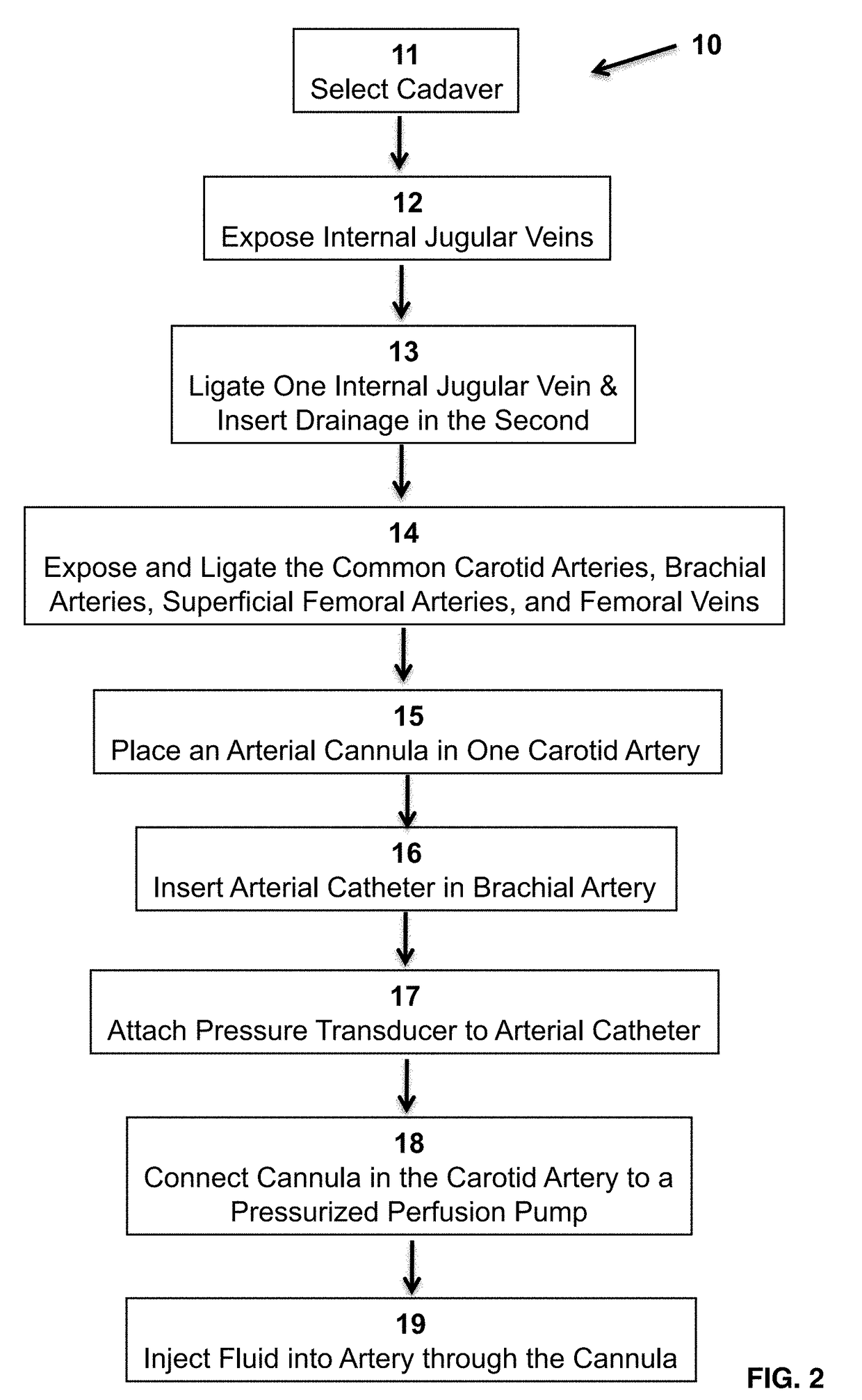Central Pressurized Cadaver Model
a cadaver model and central pressurization technology, applied in the field of medical equipment, can solve the problems of affecting the application of virtual reality simulation in the training of resuscitative endovascular balloon occlusion of the aorta, requiring extensive training, and complicated execution of the aorta resuscitation operation
- Summary
- Abstract
- Description
- Claims
- Application Information
AI Technical Summary
Benefits of technology
Problems solved by technology
Method used
Image
Examples
example 1
Preparation of the Cadaver Model
[0041]Fresh cadavers are refrigerated at 36° F. with no embalming performed. Arterial flushing is performed prior to refrigeration with boric acid solution (B4, Hydrol Chemical Co, Yeardon, Pa.) to keep the body at a pH of 7.4. A body that has no, or minimal history of, severe peripheral vascular disease or vascular reconstruction is selected.
[0042]The selected cadaver is placed on a fluoroscopy table with the head at the sink to allow easy drainage of perfusion fluid, as shown in FIG. 3. The bilateral internal jugular veins, common carotid arteries, brachial arteries, superficial femoral arteries, and femoral veins are exposed through appropriate incisions. A drainage tube 21 for intermittent drainage is placed in the right internal jugular vein as show in FIG. 4. An arterial cannula 22 for perfusate is placed in the right carotid artery (FIG. 5). The left internal jugular vein and the carotid arteries are ligated, as are the bilateral superficial fe...
example 2
Training Procedure of Resuscitative Endovascular Balloon Occlusion of the Aorta
[0044]The Amplatz wire is advanced through the arterial catheter after approximation of insertion length by external landmarks. The arterial catheter is removed and a 12Fr sheath is inserted to allow access for the CODA balloon. The systolic blood pressure prior to inflation is about 40 mmHg to 80 mmHg, and infusate is pumped in a pulsatile fashion and titrated to this systolic blood pressure goal. If the systolic blood pressure rises about 80 mmHg, and infusate is pumped in a pulsatile fashion and titrated to his SBP goal. If the SBP rises above about 80 mmHg, prior to aortic occlusion, removal of fluid can be accomplished by venting the internal jugular cannula to allow drainage out of the central vasculature. A C-arm performs the function of a portable or digital X-ray machine by providing an image of the chest with wire 28 at the proximal descending thoracic aorta, as well as an image of the occlusive...
PUM
 Login to View More
Login to View More Abstract
Description
Claims
Application Information
 Login to View More
Login to View More - R&D
- Intellectual Property
- Life Sciences
- Materials
- Tech Scout
- Unparalleled Data Quality
- Higher Quality Content
- 60% Fewer Hallucinations
Browse by: Latest US Patents, China's latest patents, Technical Efficacy Thesaurus, Application Domain, Technology Topic, Popular Technical Reports.
© 2025 PatSnap. All rights reserved.Legal|Privacy policy|Modern Slavery Act Transparency Statement|Sitemap|About US| Contact US: help@patsnap.com



